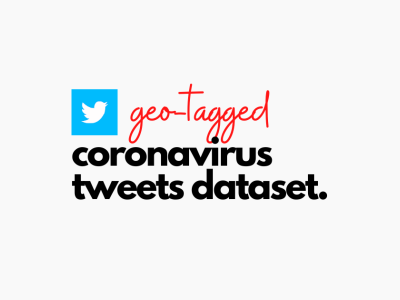Integrated Energy Management and Forecasting Dataset

- Citation Author(s):
-
Karthick Raghunath K M
- Submitted by:
- K M Karthick Raghunath
- Last updated:
- DOI:
- 10.21227/zrgp-kh30
- Data Format:
 4310 views
4310 views
- Categories:
- Keywords:
Abstract
The Integrated Energy Management and Forecasting Dataset is a comprehensive data collection specifically designed for advanced algorithmic modeling in energy management. It combines two distinct yet complementary datasets - the Energy Forecasting Data and the Energy Grid Status Data - each tailored for different but related purposes in the energy sector.
The integration of IoT (Internet of Things) technologies in the Integrated Energy Management and Forecasting Dataset significantly enhances its functionality and applicability in real-world scenarios. Sensors across various points in the energy grid and renewable energy sources gather data like energy consumption, production, grid load, and environmental factors (temperature, weather conditions). Sensors within the grid infrastructure also monitor load, distribution, and transmission status. Sensors in solar panels, wind turbines, and traditional power plants (like coal or gas-fired) provide detailed output data. IoT infra ensures that the data is not just accurate but also current, reflecting the latest status of the energy grid and environmental conditions.
This component of the dataset is crafted for time series forecasting models. It encompasses 500 hourly records across approximately 21 days. Each record in the dataset is detailed with:
§ Timestamp: Providing a temporal context with the date and hour of the record.
§ Energy Demand: Simulated values reflecting the energy demand for each hour, crucial for understanding consumption patterns.
§ Energy Supply: Corresponding energy supply values, pivotal for achieving a balance with the demand.
§ Temperature: Hourly temperature readings, a significant factor influencing energy usage in heating and cooling systems.
§ Weather Condition: Varied conditions including clear, cloudy, rainy, or windy, influencing both energy production (particularly from renewable sources like solar and wind) and demand.
This dataset is invaluable for renewable energy management. Analyzing the trends and patterns in energy demand and supply aids operators in accurately predicting future energy requirements. The inclusion of temperature and weather data further enhances the predictive capability, especially in forecasting the variability of renewable energy sources. This forecasting is instrumental in making informed decisions about energy storage, distribution, and transactional planning in energy markets.
The second component includes 500 instances that each represents a unique state of an energy grid. It comprises:
§ Grid Load: Reflecting the total load on the energy grid at a given moment.
§ Renewable Source Output: The energy output from renewable sources like solar and wind.
§ Non-Renewable Source Output: Energy output from non-renewable sources such as coal and gas.
§ Energy Price: Current energy pricing, a critical factor in making operational decisions.
§ Weather Condition: Weather status at the time, impacting both energy production and consumption.
This dataset plays a crucial role in smart grid management. Utilizing Deep Learning (DL) models, it enables grid operators to make efficient, real-time decisions concerning energy distribution and load balancing. This is particularly vital for integrating the often-variable outputs from renewable energy sources into the grid. The dataset facilitates the optimization of energy flow, reduction in wastage, and potential lowering of operational costs. The inclusion of weather and pricing data allows for dynamic operational adjustments in response to external factors, thus boosting the reliability and efficiency of the power grid.
When merged, these datasets offer a realistic and rich framework for the development and testing of algorithms in energy management, with a focus on renewable energy integration and smart grid operations. They provide a solid foundation for exploring how advanced forecasting and decision-making models can drive the evolution towards more sustainable and efficient energy systems. This integrated dataset is a valuable asset for researchers and practitioners aiming to innovate in the field of energy management, leveraging the potential of data-driven solutions for a more sustainable future.
This dataset provide a realistic framework for developing and testing algorithms in the field of energy management, particularly focusing on renewable energy integration and smart grid operations. They offer a foundation for exploring how advanced forecasting and decision-making models can contribute to more sustainable and efficient energy systems.
Instructions:
The Integrated Energy Management and Forecasting Dataset is a comprehensive data collection specifically designed for advanced algorithmic modeling in energy management. It combines two distinct yet complementary datasets - the Energy Forecasting Data and the Energy Grid Status Data - each tailored for different but related purposes in the energy sector.
The integration of IoT (Internet of Things) technologies in the Integrated Energy Management and Forecasting Dataset significantly enhances its functionality and applicability in real-world scenarios. Sensors across various points in the energy grid and renewable energy sources gather data like energy consumption, production, grid load, and environmental factors (temperature, weather conditions). Sensors within the grid infrastructure also monitor load, distribution, and transmission status. Sensors in solar panels, wind turbines, and traditional power plants (like coal or gas-fired) provide detailed output data. IoT infra ensures that the data is not just accurate but also current, reflecting the latest status of the energy grid and environmental conditions.
This component of the dataset is crafted for time series forecasting models. It encompasses 500 hourly records across approximately 21 days. Each record in the dataset is detailed with:
§ Timestamp: Providing a temporal context with the date and hour of the record.
§ Energy Demand: Simulated values reflecting the energy demand for each hour, crucial for understanding consumption patterns.
§ Energy Supply: Corresponding energy supply values, pivotal for achieving a balance with the demand.
§ Temperature: Hourly temperature readings, a significant factor influencing energy usage in heating and cooling systems.
§ Weather Condition: Varied conditions including clear, cloudy, rainy, or windy, influencing both energy production (particularly from renewable sources like solar and wind) and demand.
This dataset is invaluable for renewable energy management. Analyzing the trends and patterns in energy demand and supply aids operators in accurately predicting future energy requirements. The inclusion of temperature and weather data further enhances the predictive capability, especially in forecasting the variability of renewable energy sources. This forecasting is instrumental in making informed decisions about energy storage, distribution, and transactional planning in energy markets.
The second component includes 500 instances that each represents a unique state of an energy grid. It comprises:
§ Grid Load: Reflecting the total load on the energy grid at a given moment.
§ Renewable Source Output: The energy output from renewable sources like solar and wind.
§ Non-Renewable Source Output: Energy output from non-renewable sources such as coal and gas.
§ Energy Price: Current energy pricing, a critical factor in making operational decisions.
§ Weather Condition: Weather status at the time, impacting both energy production and consumption.
This dataset plays a crucial role in smart grid management. Utilizing Deep Learning (DL) models, it enables grid operators to make efficient, real-time decisions concerning energy distribution and load balancing. This is particularly vital for integrating the often-variable outputs from renewable energy sources into the grid. The dataset facilitates the optimization of energy flow, reduction in wastage, and potential lowering of operational costs. The inclusion of weather and pricing data allows for dynamic operational adjustments in response to external factors, thus boosting the reliability and efficiency of the power grid.
When merged, these datasets offer a realistic and rich framework for the development and testing of algorithms in energy management, with a focus on renewable energy integration and smart grid operations. They provide a solid foundation for exploring how advanced forecasting and decision-making models can drive the evolution towards more sustainable and efficient energy systems. This integrated dataset is a valuable asset for researchers and practitioners aiming to innovate in the field of energy management, leveraging the potential of data-driven solutions for a more sustainable future.
This dataset provide a realistic framework for developing and testing algorithms in the field of energy management, particularly focusing on renewable energy integration and smart grid operations. They offer a foundation for exploring how advanced forecasting and decision-making models can contribute to more sustainable and efficient energy systems.












HI all ,
How can i access to the dataset , i am MS student and resercher . Can some guide me how to get access to the data sert please .